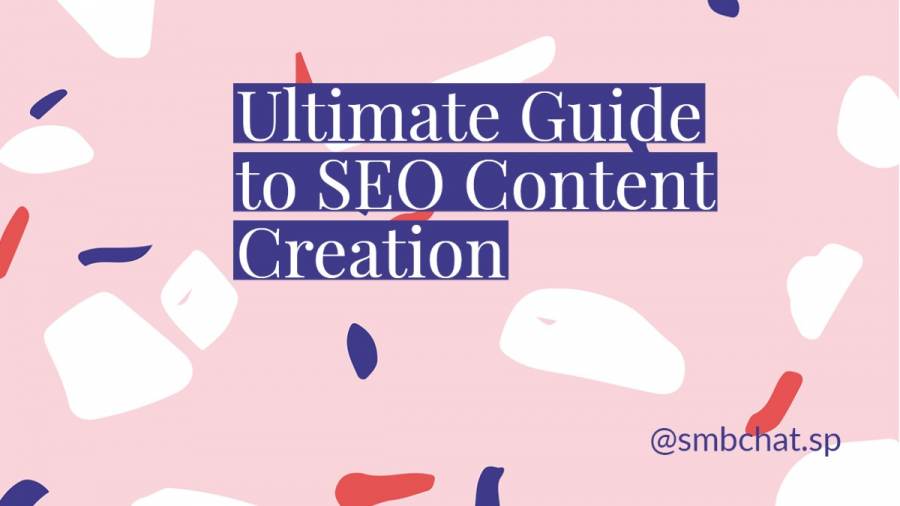Content Repurposing 101: Your Simple Guide to Content Repurposing
Cinderella stories are rare in content creation and generating organic traffic. Marketers are more familiar with occasional moments of stagnant or barely moving traffic – graphs that look more like plateaus and valleys instead of the uphill climb that says you’re doing a good job.
The diagnosis for these unpleasant metrics could be anything –from the fact that there’s always a growing roster of competitors to contend with, your audience can change how they consume content, the quality of your content, content fatigue, or how relevant the audience thinks your content is.
Whatever the case, producing more content to cure the problem would be similar to pouring water into the ocean. Most times, all your pieces of content need is refreshing and repurposing to recharge your audience’s interest. So, what is content repurposing?
What is Content Repurposing?
Think of that piece of attire in your closet that works for a ton of occasions. It could be a black dress you drape a blazer on, and you’re all set for an interview. Match it with high-heel slippers, and you’re ready to rock that cocktail party. Or, the pair of shoes that fits a formal luncheon and will also work for your high-tech meeting with investors. Content repurposing is a content strategy that works a little like that.
Content repurposing is also called content recycling. It is re-using the high-quality content you have by presenting it in a fresh format to extend its reach and lifespan.
The Benefits of Content Repurposing
Every marketer can relate to a campaign launch that seemed to bite the dust with little if any conversions. Could be your audience was so used to your content that they gave it a shrug the moment they saw it. When you repurpose content, you stand chance to avoid the effects of content fatigue to gain these immediate benefits:
Saving Time
A bit of time wasted in marketing is too much time. When you repurpose old content, you save more time because you already have the content ROI to point you towards high-performing pieces of content you can tweak and prepare for redistribution.
For example, social posts that did well on your social media platforms, engaging videos that keep gaining traffic, etc represent hours of time that your content team doesn't have to spend again. Content recycling is content utilization that works much quicker than combing different resources for ideas, filtering out the best, and working on them to fit your audience.
SEO Boost
Your content pieces are full of original content centered on similar targeted keywords. The chances are that search engine crawlers will recognize you as an authority on a particular subject when you repurpose that content. Also, content recycling is not revamping stale content but refurbishing content that people actually want and making it available through different platforms.
Creating Opportunities for Backlinks
The more backlinks your pages have, the more organic traffic they get from Google. However, people only share content they think is relevant, well done, or entertaining. Repurpose your content to meet those three requirements, and people will share more of it, accumulating backlinks for your site.
Increasing Conversions
As content repurposing boosts your SEO and increases opportunities for backlinks, it creates avenues for you to improve your conversions.
History has shown that the benefits of a healthy SEO and backlinking also boost your online presence. Over time, a growing brand awareness comes with its own benefits, chief among them being increased conversions.
Scaling
Content repurposing is your gateway to scaling both in terms of content amount and audience reach. An article that you can turn into a newsletter or a video tutorial for YouTube gives your brand a trio of content from just one content type. It saves you hours of time and also makes that content available on three different platforms.
Also, recycling content from influencers can easily multiply traffic to your site giving you much more traffic than you would with regular content.
Targeting Particular Buying Stages
The buyer’s journey stages are like going on a real-life journey. The beginning and the destination may be the same, but people take different periods to move from one step to the next.
This fact segments the audience’s needs for content into different groups. A person with a few items in the cart may be open to long-form content. Those who just heard about you are more inclined to consume shorter content. Content repurposing helps you target your prospects according to where they are in the buyer’s journey.
Content Repurposing Tips
It would help if you were careful not to give off the vibe that you’re redundant and have no intention of serving fresh content. These tips will help you do a great job.
1. Create a Podcast
Almost 60% of US consumers listen to audio content through podcasts. This population accounts for people who multitask and find podcasts easy to digest even when their hands are full.
Content creators can take advantage of this demographic by creating a podcast out of high-performing posts and uploading them on popular social channels. You can use the blog content as a script and then find an industry thought leader to share their thoughts on the subject.
2. Create YouTube Videos
Assume you have social content such as a how-to blog post or webinar content on how to set up a company. You can turn the ideas and steps in the post into a script for an explainer video on YouTube. The same case goes for posts that give directions on travel, how to get government services, etc. It’s easy, straightforward, and highly palatable for people who learn better using visuals.
3. Create an E-book
Have long-form educational content pieces? You can research the aspects of content people are more interested in and improve on them with more details. That way, you can create an E-book out of your older educational resources to feed people with an enormous appetite for detailed information.
4. Include Expert Interviews in Old Articles
Business owners and regular people love looking for educational resources online so much that Google processes 63,000 search queries every second. Plus, if the core topics they are looking for are backed by an expert’s opinion, the more likely that they’ll appreciate it more and may come back to your social networks for more authoritative answers.
5. Create an Infographic
An infographic is an ideal crowd-puller because it presents data in a visual format. When repurposing, infographics make for excellent tools to summarize the most compelling statistics from your blog content in a new, thought-provoking fashion.
Place them within blog posts or post them on social media channels when the season is right -for example, sharing statistics on maternal health on Mother’s Day eve.
6. Create Slideshares
SlideShares are often the safest forms of content to start for newbies who want to repurpose their pieces of content. All you have to do is convert information into visual presentations.
SlideShares are a goldmine content marketing strategy too because they are easy to share and introduce audiences to texts and words in easy-to-digest tidbits. Also, SlideShare presentations make it possible to add other graphics that you can’t in long-form posts.
Best Content for Repurposing
Before you hit the ground running with these ideas, it’s essential to arm yourself with information about which types of content are ripe for repurposing:
Evergreen Content
The crux of evergreen forms of content is relevance. It is search-optimized and bears constant value to its audience long after you’ve posted it, and often keeps traffic growing. It’s safe to say that evergreen content ages like fine wine.
Popular Content
Popular authentic content creates a buzz around your brand. Use data analytics to identify content that has attracted the most traffic. Next, identify the reasons for their success, and recreate that content in a more appealing format.
You also need to figure out how much repurposing is enough for content X or Y. Some blog posts may need new stats, particular video content may need new visuals, while some blog posts may call for deleting irrelevant parts. Similarly, you can repurpose a blog full of facts and descriptions about a product by telling audiences about the possibilities presented by that product.
Content that Tells a Good Story
Great online conversations between prospects and brands start with authentic brand stories. If you have blog post content that tells a story, one great way to repurpose it is by continuing the story. Introduce a different character to bring in a new perspective and borrow some lines from video content you have if it fits into the narrative. Include a guest post where appropriate too.
For example, content for hotels combined with influencer marketing works pretty well in creating authentic brand stories people love. It’s the same principle that keeps famous content creators going. They continue telling stories and refreshing them with new characters and perspectives.
Don't be afraid to retell captivating stories of consumers who keep benefitting from your brand. Ask them to talk about their progress since signing up for your services or products to repurpose their testimonials and generate consumer internet traffic.
The Unexpected Content
Captivating stories aren't the only ones that help generate consumer internet traffic. You can say something in a different way and get people talking. The idea of unexpected content is to catch the audience by surprise by communicating compellingly.
For instance, by adding a surprising headline, hard-to-believe but factual stats, or an intriguing storyline to content for hotels, you grab their attention and get an opportunity to pitch your product or service uninterrupted. This idea also works well with email campaigns helping you score more email opens.
DIYs
The Do it Yourself population loves new ideas and is most likely to prowl the internet searching for them. Any tutorials you have, whether in text or video form, are always excellent tools for repurposing. Make sure you share a downloadable resource as well to encourage them to join your email list.
For example, if you shared blog posts with steps on holding an in-person baby shower two years ago, how can people throw a big baby shower online? Turning it into a bullet point graphic will help make it easy to follow and it's an effective tool for a user who only has a bit of time.
Try writing a blog series out of one DIY blog you did to rope the audience into spending more time on your site. That extra time spent on your site will turn into more extra time, and before you know it, you are making more conversions.
Better yet, if you've worked with an influencer and produced a series of blog posts on DIYs, you can always refresh that content with photos from their website, DIY social media posts they’ve created about your in-store materials or content they did on your e-commerce website.
User-generated Content
User-generated content is content about your brand that is created by people who are not part of your brand. The gist of it is that people believe it just as much as authentic content from influencers. In fact, Hubspot found that 90% of consumers say user-generated content influenced their buying decision.
Key Takeaways
Repurposing content helps you make killer content for your brand. Search engines respond by loving your brand back and placing it higher in SERPs for all the world to see. And if you can keep up with the excellent work, you’ll endear yourself to people who love quality content, and that’s just about everybody. In addition, don’t forget to refine your content distribution strategy to promote all your repurposed content.
Meanwhile, you don’t have to pull your hair out struggling to repurpose content. Zoey Writers have every tool and expertise to help you repurpose content into a natural drawcard. Contact us today.
Before you go, here are more guides to make the most of your content:
- A beginner's guide to content distribution
- How to give your posts a new look with content upgrading
- 3 types of content distribution platforms
Photo by Sigmund on Unsplash. Thank you!

















